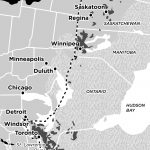
The Brandenburg Gate gets its name from the town of Brandenburg an der Havel, the former industrial heart of Prussia on the banks of the navigable Havel river. Brandenburg’s heavy industries have moved on, but the Gate’s position—with an eye toward a riverine-based industrial hub and in the heart of Berlin – encapsulates the German strategy of strong central authority and industrialization. Built less than two decades before the start of the Napoleonic Wars as a symbol of peace, Berlin’s iconic Brandenburg Gate has served as the backdrop for the highs and lows of more than 200 years of German history.
The gate’s damage and disrepair during the latter half of the 20th century echoes Germany’s own perilous geopolitical position within its European neighborhood. Germany’s history as a series of independent statelets and a lack of unifying internal geography helped spur the widespread industrialization that forms the backbone of the German economy today. Berlin’s ability to consolidate strong central authority over the remnants of the Holy Roman Empire transformed Germany into a global export powerhouse. But Germany’s industrial base does not come cheap. The funds required had to come from the citizens, leaving little behind for them to purchase goods. Germany’s development model requires it to export, for its own people lack the funds to consume what they produce.
Germany’s leaders now must navigate both a Eurozone in disarray as well a slowing international economy, managing a population that has not historically tolerated low economic growth or high unemployment as they enter an era where Germany will be suffering from both.
For more on Germany’s evolution as well as Germany’s role in Europe’s future, see Chapters 3 and 12 of The Accidental Superpower.



